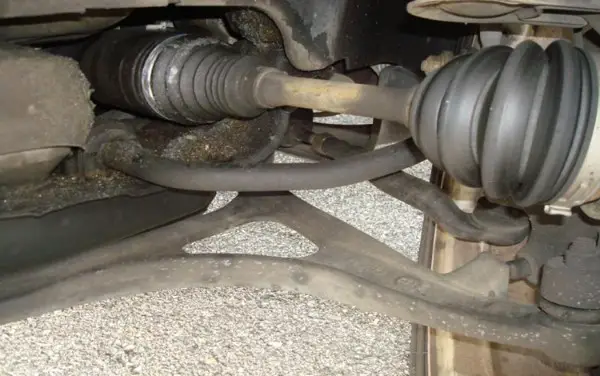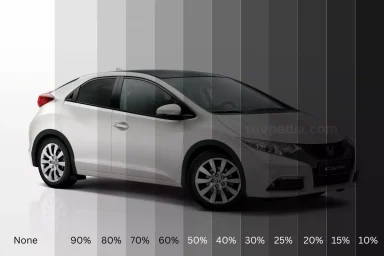If you have been wondering what SUV drive Shaft is, then this article is for you. In the following paragraphs, I will cover some of the important points about SUV driveshafts so that you can have a piece of in-depth knowledge about drive Shaft and their working mechanism.
Table of Contents
Is it OK to drive without a driveshaft?
Yes! It’s perfectly fine to drive without a driveshaft. Some cars even come equipped with no driveshaft at all. I say “yes” because the drive shaft does not affect how fast your car goes; instead, it affects how much power your engine has. If you don’t have one, you won’t lose any speed by having one. You’ll just gain extra horsepower.
So yes, you can still drive safely without a driveshaft. Also, you should know about the driveshaft because it’s made of metal, so it doesn’t break easily.

Can You Drive Safely Without Front Drive Shaft?
Although you can drive with one of the drive shafts off without a problem, it’s just not a good decision. If you were wondering whether you could drive safely without a front driveshaft, the answer is “no.”
A driveshaft connects the transmission to the differential. Because the drive shaft transmits torque between the two components, it needs to remain straight throughout its length. Otherwise, the torque would become uneven and create problems such as vibration and noise.
So if you plan to buy a used car, check the condition of the driveshaft before buying it. Also, look closely at the other parts of the car. For example, if the steering wheel looks loose, replace it immediately. And if the tires seem worn, consider replacing them too.
These things may also indicate that the car was involved in an accident. In addition, if you notice anything unusual about the way the car drives, take it to a mechanic right away. They can help diagnose the problem and fix it quickly.
Can I drive without a rear driveshaft?
Actually, yes, you can drive without a rear driveshaft. When that happens, you will be in FWD mode. It’s just that the components of a car are an interconnected system. Losing the function of one of them will cause a cost, whatever it is.
As mentioned above, the drive shaft transfers torque between the transmission and the differential. Therefore, it must stay straight during operation. When the drive shaft bends, the transfer of torque becomes uneven, which causes vibrations and noises. This is especially true if the driveshaft gets bent while under heavy load.
Even though the drive shaft remains intact, the bending creates friction and heat inside the transmission and eventually damages the gears.
As a result, the transmission loses efficiency and starts making abnormal sounds. To avoid these issues, always keep the driveshaft straight. Make sure that it stays straight whenever you turn the key off. Then, park the car properly. Afterward, remove the keys and lock the doors. Finally, put the ignition switch back in the ON position. Now, start the car again. You can find information about the best ways to maintain your driveshaft here:
drive shaft life expectancy
Driveshafts generally last up to 75,000 miles, but still, depending on the car and wear and tear, you may receive considerably less or much more.
When it comes to driving shafts, several factors determine their lifespan. These factors include:
How often they get maintenance
To make the driveshaft last longer, you should take care of it often. An example is with grease your shaft every oil change.
Most people tend to change their drive shaft every 5 years. However, this depends on the type of vehicle. Some SUVs require more frequent replacement than others. For instance, if you own an SUV, you need to be careful when driving over rough terrain. This will cause excessive wear and tear on the drive shaft.
What kind of material they are made from
Driveshafts are usually made out of steel. Steel is durable, but it tends to rust after being exposed to water for long periods. To prevent corrosion, you should clean the area where the driveshaft meets the body regularly. You can use soap and warm water. If possible, cover the entire surface with plastic sheeting. Finally, ensure that you don’t leave any part of the drive shaft to touch the ground. The dirt particles might damage the metal and shorten its life span.
What kind of driving conditions do they encounter
The environment where the driveshaft operates determines how long it lasts. In general, drive-shafts work well in dry climates. But, they fail quickly in wet weather because moisture makes the metals expand and contract. Therefore, if you live in extreme climate changes, you should pay close attention to the maintenance schedule.
How much force they have to withstand
Some SUVs come equipped with stronger driveshafts compared to those found in cars. This means that they can handle higher loads. On the other hand, some models only include weaker ones. For example, most SUVs have less powerful engines compared to sedans. Thus, they require shorter driveshafts.
What happens if you break your drive shaft?
If you break your driveshaft, you’ll notice an unusual noise coming from the engine compartment. It’s similar to what you hear when someone hits his/her head against something hard. In addition, you may experience vibration at idle speed. These symptoms indicate that the drive shaft has failed.
At this point, you should stop using the vehicle immediately. Otherwise, you could risk getting injured by the moving parts.
Also, it would help if you didn’t attempt to fix the problem yourself. Instead, call a professional mechanic who specializes in repairing vehicles like yours.
The mechanic will replace the damaged component and install the new one. After replacing the broken part, they will check whether everything works fine. If not, they will inform you about the next steps required to repair the issue.
How much does it cost to fix a drive shaft?
Generally, repairing or replacing the driveshaft will cost you around $400 to $1800, depending on the condition and type of car. It all depends on the brand and model of the vehicle.
Most manufacturers offer free repairs for minor issues such as cracked windshield wiper blades. However, significant problems such as broken driveshafts require additional charges.
For example, if you need to replace the whole driveshaft assembly, expect to spend around $500-$1000. However, there are cases where you can get away with just changing the bearings or bushings.
This way, you won’t incur extra expenses. To find out the exact price, contact local auto shops near you. They will provide you with information regarding the costs associated with fixing your specific situation.
How long does it take to replace the drive shaft?
Depending on the type of replacement needed, it takes anywhere between 30 minutes to 2 hours. Also, keep in mind that the process varies depending on the condition of the original components. Therefore, it’s best to hire professionals whenever possible.
Final thought
Drive-shaft is a vital component of any automobile. If you want to avoid accidents caused by faulty driveshafts, make sure to maintain them properly. Hopefully, the information above will help you understand more about these essential components. Remember, regular inspections and proper care will ensure their longevity.



